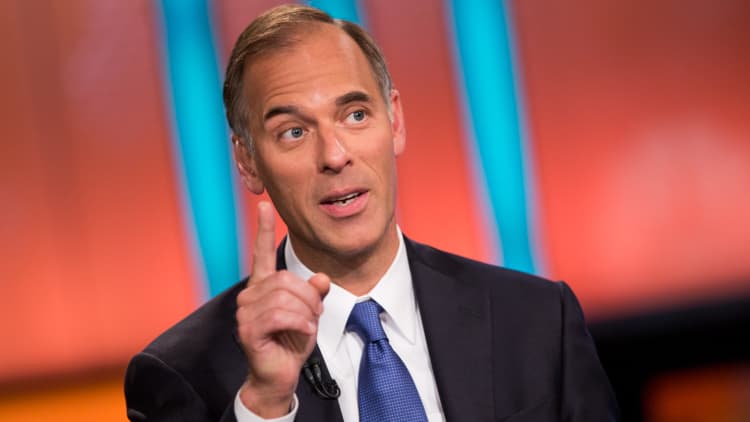
The shockingly low gain of just 98,000 jobs in March masks new signs of labor market strength, but it also dashes some optimism that the economy can break out of its sluggish growth trend.
The March payrolls were well shy of the 180,000 expected by economists. Some of that shortfall was related to the winter weather that showed up in March, after a mild February.
The low jobs number also is not likely to deter the Federal Reserve from further interest rate hikes this year, unless it is followed by another weak number next month. The Fed is expected to raise rates two more times this year, possibly in June and September.
But it also shows that the economy is not likely on the verge of snapping out of a low growth pace, expected at about 1.2 percent in the first quarter.
"The idea that the market has been pricing in
Strong employment reports in January and February, which initially showed nearly 235,000 jobs each, were revised lower, by a total of 38,000, bringing the three-month average to a still respectable 178,000.
But aside from the soggy jobs number, other aspects of the report were strong. The most stunning improvements were the declines in unemployment. The unemployment rate fell to a 10-year low of 4.5 percent, from 4.7 percent, as more workers joined the labor force.
A broader measure of unemployment, viewed as the "real unemployment" rate, also showed solid improvement. There was a significant 0.3-point drop to 8.9 percent in a measure that captures discouraged workers and workers who work
Areas of disappointment included the loss of nearly 30,000 retail jobs, after a similar decline in February. In what appears to be weather-related, the construction industry added just 6,000 jobs after gaining 59,000 in February. Manufacturing added 11,000, down from 26,000 in February but still a positive for a sector that had been losing jobs in 2016.
Stocks were slightly lower following the report, and Treasury yields initially declined on the report but later steadied. The 10-year Treasury yield above 2.31 percent after dipping to 2.26 percent.
"You always want to be on alert for the start of a trend, but the other data makes me comfortable that this is not taking the Fed off the table," said John Briggs, head of
Arone said the market action Friday was reflecting disappointment that the weak jobs number doesn't show an economy on the verge of ramping up. Markets have been disappointed that Washington failed to pass a new health-care bill, which means that corporate tax reform may also be delayed. Both were promised by President Donald Trump for this year.
"At least a third of the postelection [stock market] rally was driven by optimism around the Trump agenda, which would include deregulation, lower taxes, fiscal policy and higher infrastructure spending. What's happening now is we're not seeing that follow through at the pace and the size that was anticipated. The shape, the size and the timing of these things is less certain. As a result, some of the optimism that was priced
Peter Boockvar, chief market analyst with Lindsey Group, said the job pace, when viewed on a three-month basis, is not much different from the 187,000 rate of 2016.
It "just confirms the slowing we've seen over the past few years," he wrote in a note. "I want to make something very clear, we are late cycle in this economic expansion and with the unemployment rate now down to 8.9 percent all in and 4.5 percent in the widely followed U3, it is tougher and tougher to find good employees and thus it is the supply side of the equation that is the likely reason for this jobs miss relative to expectations. That said, economic growth is likely to be only about 1 percent this quarter and with weak productivity as almost 180,000 jobs per month is not adding much in terms of growth."
Boockvar said he does not expect bond yields to fall much further. Yields move opposite bond prices.
"As for stocks, that tax reform better
But Ward McCarthy, chief financial economist at Jefferies, said the jobs data are solid and do show a new optimism despite the soft payroll number.
"The March data is screwy. Yes it is showing a Trump bump, and one of the most interesting things to me is since the election, one of the striking pieces of information in the household survey has been the participation rate for low-skilled workers, people with less than a high school degree," said McCarthy, noting it has risen by about 5 points to just under 50 percent. "That's part of the whole story related to increased optimism."
McCarthy said he sees the job growth as indicative that the current business cycle has legs. He agreed with Boockvar that the job growth would be better if there were more workers available with the skills needed by businesses. "It's a pretty favorable picture that we're doing this well without showing any significant signs of generating wage cost inflation," he said. March hourly wage growth was up 0.2 percent.
Watch: Zandi says jobs market still feels good



